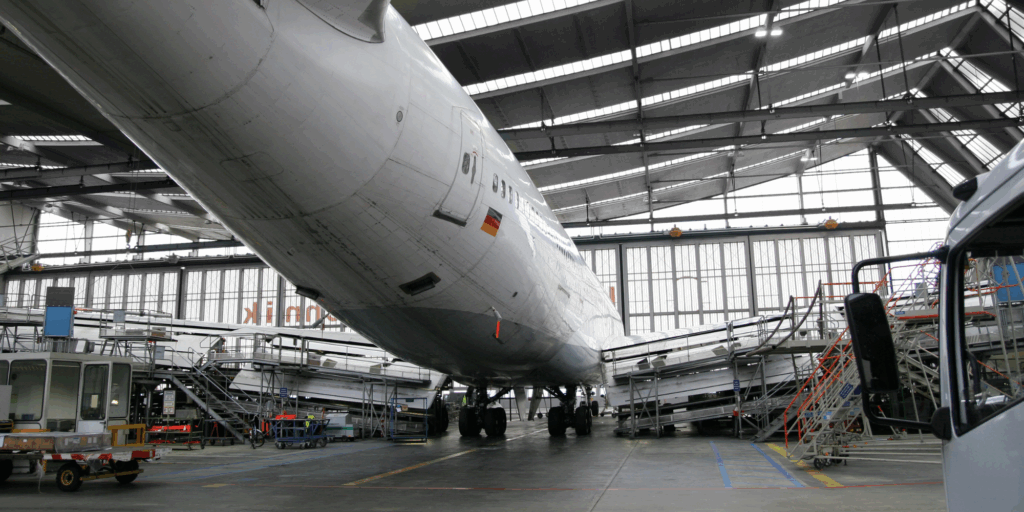- Flat 2, "Merill Court "Fuxa Street 1308 San Ġwann, Malta
Key KPIs Every Airline Maintenance Manager Should Track: A Comprehensive Performance Framework
In the complex and highly regulated environment of commercial aviation, Maintenance Managersshoulder significant responsibility for aircraft safety, operational efficiency, and overall fleet performance.As maintenance operations increasingly adopt data-driven approaches, the strategic selection andanalysis of Key Performance Indicators (KPIs) has become fundamental to effective maintenancemanagement.
This technical overview presents a comprehensive framework of critical maintenance KPIs that enableproactive decision-making, resource optimization, and continuous process improvement. Developedthrough industry benchmarking and incorporating IATA standards, these metrics collectively provide aholistic view of maintenance operational excellence while addressing regulatory compliancerequirements.
The Strategic Importance of Maintenance KPIs
Maintenance KPIs serve multiple essential functions within an airline’s operational ecosystem:
Performance Visibility: They transform complex maintenance operations into quantifiable metricsthat can be tracked, analyzed, and reported to stakeholders
Predictive Capability: Well-designed KPIs offer early warning indicators of emerging issues beforethey manifest as operational disruptions
Resource Optimization: They highlight areas where personnel, parts, and equipment can beallocated more effectively
Continuous Improvement: Historical KPI trends enable measurement of the effectiveness of processchanges and operational adjustments
Regulatory Alignment: Many KPIs directly correlate with compliance requirements from aviationauthorities
The following eight KPIs constitute a core measurement framework that addresses the critical dimensionsof maintenance performance. When implemented within a structured reporting methodology, theyprovide maintenance leadership with actionable intelligence for both tactical and strategic decision-making.

Critical Maintenance Performance Metrics
1. Scheduled Task Completion Rate (STCR)
Definition: The percentage of scheduled maintenance tasks completed within their planned timeframewithout deferral or extension.
Calculation: (Number of completed tasks ÷ Number of scheduled tasks) × 100%
Target Range: 95-98% for line maintenance; 90-95% for base maintenance events
Strategic Significance: This metric serves as the fundamental indicator of maintenance planningeffectiveness and execution capability. It measures the maintenance organization’s ability to forecastresource requirements accurately and complete planned work within allocated timeframes. A consistentlyhigh STCR indicates effective maintenance planning, adequate staffing levels, and efficient logisticssupport.
Implementation Considerations:
Segmentation by aircraft type reveals fleet-specific trends
Analysis by maintenance check type (daily, weekly, A-check, etc.) identifies which maintenance eventsface the greatest completion challenges
Correlation with parts availability metrics can reveal supply chain bottlenecks affecting completionrates
Integration with manpower availability data helps optimize shift planning and resource allocation
Root Cause Analysis Triggers: When STCR falls below target thresholds, maintenance managers shouldinvestigate:
Tool and equipment availability constraints
Maintenance documentation quality and accessibility issues
Technician qualification gaps for specific maintenance tasks
Ground support equipment (GSE) availability or serviceability issues
Parts inventory discrepancies or procurement delays
Shift handover inefficiencies resulting in task discontinuities
2. MEL Deferred Defects per Aircraft
Definition: The average number of open Minimum Equipment List (MEL) items per aircraft in theoperational fleet.
Calculation: Total number of active MEL deferrals ÷ Number of operational aircraft
Target Range: <3.0 for short-haul narrow-body operations; <4.0 for wide-body long-haul operations
Strategic Significance: This metric provides direct insight into the operational health of the fleet and themaintenance organization’s capacity to address defects promptly. MEL deferrals, while permissible underregulatory frameworks, represent compromises to the ideal aircraft configuration that may impact operational flexibility, fuel efficiency, and passenger experience. The cumulative burden of deferrals alsoincreases technical complexity for flight crews and maintenance personnel.
Implementation Considerations:
Categorization by ATA chapter identifies systems with recurring reliability issues
Analysis by MEL category (A, B, C, D) shows the distribution of deferral urgency
Fleet-specific views highlight aircraft types with disproportionate deferral rates
Age-based analysis correlates deferral rates with aircraft lifecycle phases
Root Cause Analysis Triggers: When MEL deferrals exceed target thresholds, maintenance managersshould investigate:
Parts availability constraints for frequently deferred components
Technician proficiency gaps in specific system troubleshooting
Access limitations during typical transit turnaround times
Inappropriate use of MEL as a maintenance planning tool rather than an exceptional provision
Systemic reliability issues requiring engineering review and potential manufacturer engagement
3. MEL Closure vs. Opening Rate
Definition: The ratio of closed MEL items to newly opened MEL items over a defined period.
Calculation: Number of closed MEL items ÷ Number of newly opened MEL items
Target Range: >1.05 (indicating a net reduction in open MEL items)
Strategic Significance: This dynamic metric measures the maintenance organization’s ability to resolvedeferred defects at a faster rate than new deferrals are being generated. It provides insight intomaintenance recovery capacity and the effectiveness of deferral management processes. Sustained valuesbelow 1.0 indicate a growing backlog of deferred maintenance that may eventually impact operationalflexibility and scheduling options.
Implementation Considerations:
Station-specific analysis identifies locations consistently creating or resolving more deferrals
Time-series tracking correlates performance with operational tempo (peak vs. off-peak seasons)
Integration with parts inventory metrics determines supply chain influence on closure rates
Analysis by rectification lead time reveals opportunities for process optimization
Root Cause Analysis Triggers: When the closure/opening ratio remains below 1.0 for extended periods,maintenance managers should investigate:
Resource allocation imbalances between defect identification and rectification
Ineffective prioritization in deferral management systems
Parts provisioning strategies that fail to support timely defect rectification
Station capability gaps in addressing complex system troubleshooting
Procedural inefficiencies in work order execution or documentation
4. DDL Closure vs. Opening Rate
Definition: The ratio of closed Discrepancy Defect List items to newly documented discrepancies over adefined period.
Calculation: Number of closed DDL items ÷ Number of newly opened DDL items
Target Range: >1.1 (indicating significant net reduction in documented discrepancies)
Strategic Significance: DDLs represent non-MEL discrepancies that, while not affecting airworthiness ordispatch, impact operational efficiency, passenger experience, and brand perception. This metricmeasures the maintenance organization’s capacity to address these non-critical but important items,reflecting its commitment to overall quality and continuous improvement beyond minimum regulatoryrequirements.
Implementation Considerations:
Cabin vs. technical DDL differentiation identifies functional area performance variations
Base vs. line maintenance analysis reveals optimal rectification opportunities
Critical vs. non-critical categorization supports prioritization strategies
Post-heavy maintenance trend analysis identifies quality issues in base maintenance outputs
Root Cause Analysis Triggers: When DDL closure rates lag significantly behind opening rates,maintenance managers should investigate:
Insufficient “opportunity maintenance” planning during scheduled ground time
Inadequate material provisioning for non-MEL items
Ineffective shift briefing processes that fail to highlight DDL rectification opportunities
Procedural gaps in accurately documenting or recording completed discrepancy resolutions
Station-specific capability limitations or resource constraints
5. On-Time Performance (OTP15) – Technical
Definition: The percentage of departures occurring within 15 minutes of scheduled time, excludingdelays not attributed to technical issues.
Calculation: (Number of on-time technical departures ÷ Total number of departures) × 100%
Target Range: >98.5% for mature fleets; >97.5% for new aircraft introductions
Strategic Significance: This metric isolates maintenance’s direct contribution to overall airlinepunctuality, providing a clear measure of the maintenance organization’s impact on core businessperformance. Technical delays represent significant operational disruptions with downstream scheduleimpacts and often result in substantial recovery costs. OTP15-Technical serves as a key interface metricbetween maintenance and operations departments.
Implementation Considerations:
Delay code specificity enables precise attribution of maintenance-related delays
Root cause categorization identifies systemic vs. isolated delay triggers
Time-of-day analysis correlates delays with specific operational windows
First-flight-of-day focus highlights overnight maintenance effectiveness
Root Cause Analysis Triggers: When OTP15-Technical falls below target thresholds, maintenancemanagers should investigate:
Pre-departure check process effectiveness and timing
Technical log sign-off procedures and potential bottlenecks
Recurring fault patterns that emerge during specific operational phases
Response time metrics for AOG (Aircraft on Ground) situations
Resource allocation during peak departure banks
Coordination effectiveness between maintenance control and line stations
6. Technical Dispatch Reliability
Definition: The percentage of scheduled departures achieved without a delay (>15 minutes) orcancellation due to technical issues.
Calculation: (Number of departures without technical delay or cancellation ÷ Total scheduled departures)× 100%
Target Range: >99.0% for mature narrow-body fleets; >98.5% for wide-body operations
Strategic Significance: Technical Dispatch Reliability represents the most comprehensive measure ofmaintenance’s contribution to operational integrity. This metric encompasses both the effectiveness ofscheduled maintenance activities in preventing disruptions and the efficiency of reactive maintenanceresponses when unscheduled issues arise. It directly correlates with financial performance throughreduced disruption costs and improved asset utilization.
Implementation Considerations:
Fleet-type segmentation enables performance benchmarking against industry standards
Component reliability correlation identifies systems driving dispatch interruptions
Station analysis highlights location-specific performance variations
Seasonal trending identifies potential environmental influence on reliability
Root Cause Analysis Triggers: When Technical Dispatch Reliability trends downward, maintenancemanagers should investigate:
Effectiveness of maintenance program in preventing recurring defects
Adequacy of critical spare parts provisioning at key stations
Troubleshooting capability gaps among line maintenance personnel
MEL application consistency across the network
Effectiveness of reliability program in addressing chronic issues
Quality of maintenance data used for trend monitoring and predictive analysis
7. SACA Inspection Compliance Ratio
Definition: The ratio of compliant items to total items inspected during Safety Assessment of CompanyAircraft audits.
Calculation: (Number of compliant items ÷ Total number of items inspected) × 100%
Target Range: >95% for internal audits; >90% for surprise inspections
Strategic Significance: This metric provides insight into adherence to standard procedures andregulatory requirements during routine operations. It serves as a leading indicator of potential regulatoryexposure and demonstrates the effectiveness of quality assurance systems. SACA inspections mirrorregulatory authority methodologies (SAFA/SANA) and help identify procedural compliance gaps beforethey manifest in external audits.
Implementation Considerations:
Finding categorization by severity level (Level 1/2/3) prioritizes corrective actions
Trend analysis across inspection types (SACA/SANA/SAFA) validates internal audit effectiveness
Historical correlation with regulatory inspection outcomes validates predictive capability
Station-specific comparisons identify procedural standardization opportunities
Root Cause Analysis Triggers: When SACA compliance ratios fall below target thresholds, maintenancemanagers should investigate:
Effectiveness of technician training on standard procedures
Availability and quality of maintenance documentation
Time pressure influences on procedural compliance
Supervision effectiveness in ensuring standard work
Cultural factors affecting compliance behaviors
Quality of internal audit processes and inspector calibration
8. Station-Specific Performance Trends
Definition: Comparative analysis of key maintenance KPIs across different operational bases within thenetwork.
Calculation: Multiple metrics analyzed through location-based segmentation
Target Range: Performance variation <10% between similar stations
Strategic Significance: This multi-dimensional analysis enables the identification of performance outliersacross the maintenance network and supports targeted improvement initiatives. Station-specific trendinghighlights both best practices from high-performing locations and systemic issues at underperformingstations. This comparison framework is essential for standardizing maintenance quality and efficiencyacross geographically distributed operations.
Implementation Considerations:
Normalization by activity volume ensures fair comparisons between stations of different sizes
Operational context adjustment accounts for unique challenges at specific locations
Capability matrix correlation ensures stations are evaluated against appropriate benchmarks
Combined metric dashboards provide holistic station performance visualization
Root Cause Analysis Triggers: When significant station performance variations persist, maintenancemanagers should investigate:
Resource allocation appropriateness relative to workload
Local leadership effectiveness and management approaches
Training standardization across the network
Procedural interpretation differences between stations
Tool and equipment availability disparities
Supply chain performance variations by location
Environmental factors affecting specific stations (climate, infrastructure, etc.)

Implementation Framework and Continuous Improvement
Effective implementation of these KPIs requires more than simple metric definition and data collection. Tomaximize their value as management tools, consider the following implementation principles:
Integrated Reporting System
Establish a unified dashboard that presents interrelated KPIs together, enabling analysis of cause-effectrelationships between metrics. This integrated view prevents optimization of one KPI at the expense ofothers and supports balanced decision-making.
Tiered Response Protocols
Develop standardized response protocols for KPI threshold breaches with clearly defined:
Investigation triggers
Escalation pathways
Required analysis depth
Documentation standards
Follow-up verification
Leadership Visibility
Ensure KPI visibility at appropriate organizational levels:
Daily metrics reviewed at shift handover meetings
Weekly trends analyzed by department heads
Monthly reviews conducted by senior leadership
Quarterly performance assessed by executive management
Continuous Refinement
Periodically review the KPI framework itself:
Validate thresholds against industry benchmarks
Update calculations to reflect operational changes
Add emerging metrics that address new business priorities
Retire metrics that no longer drive meaningful insights
Conclusion
For airline Maintenance Managers operating in an environment of intense cost pressure, regulatoryscrutiny, and operational demands, these eight core KPIs provide the essential quantitative foundation forperformance management and continuous improvement. When properly implemented and consistentlyanalyzed, they enable maintenance organizations to:
Proactively identify emerging issues before they impact operations
Optimize resource allocation across the maintenance network
Demonstrate maintenance’s contribution to overall airline performance
Develop data-driven justifications for capability investments
Cultivate a performance-oriented culture built on measurable outcomes
By establishing this comprehensive KPI framework, maintenance leaders position their organizations tosupport not only safe and compliant operations but also contribute substantively to the airline’s broaderoperational and financial objectives.

